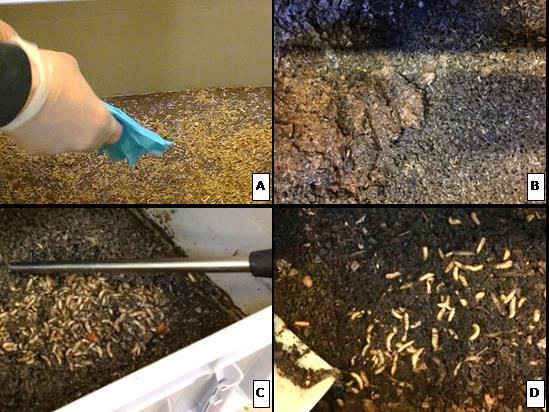
A study “Model selection for waste conversion efficiency and energy demands in a pilot for large-scale larvae treatment” was presented at the 60th International Conference of Scandinavian Simulation Society, SIMS 2019, in Västerås, Sweden.
The study evaluated some technical aspects associated with larvae growth, ventilation and drying demands in a pilot sized black soldier fly treatment system treating segregated household food waste and discussed models to describe the treatment process and its energy efficiency.
It was found that it was possible to model the black soldier fly larvae development and the associated waste degradation rate attributed to both larval and microbial metabolisms based on the results obtained from the pilot scale treatment facility and the experiments performed in laboratory environment.
Based on these models’ predictions and measurements of the conversion efficiency it was established that, assuming no heat loss from the system, the heat generated by the process was sufficient to achieve a desirable total solids content (50%) in the residue after 14 days of treatment. An exponential heat production from waste degradation can be expected, and thus, for wetter food waste, the treatment period can be expanded to achieve the desired residue total solids content. The models also allow predicting the amount of heat generated by the waste reduction during the treatment and thus they can be used as tools for deciding the duration of treatment and the necessary amount of heat supplied by the ventilation.
Contact: Evgheni Ermolaev
